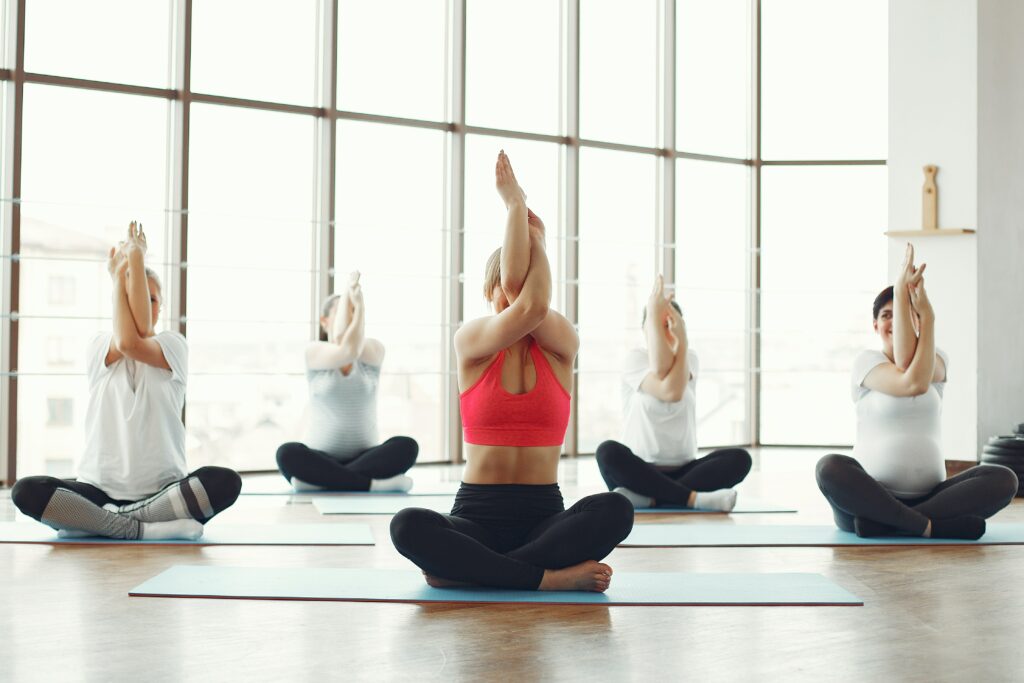Although yoga originated from ancient texts such as the Vedas and Upanishads, it has become more than just a spiritual practice. Many individuals practice yoga for various reasons, including weight loss, improved health, and stress relief, through techniques such as breath control, meditation, and body postures. Moreover, yogis claim that yoga can enhance the body’s receptiveness to healing, benefiting patients with various conditions such as autism, asthma, and cancer.
In addition to these benefits, yoga provides numerous health advantages that can improve one’s overall well-being. It can help address various issues, including sexual health, weight loss, stamina, migraines, and insomnia. Therefore, yoga should not only be considered as a fitness regimen but as a way of life.
If yoga is new to you, it is recommended to start slowly and seek guidance from a qualified instructor while maintaining proper hygiene and wearing suitable attire. Ensure you have the necessary resources, such as a proper yoga mat, to maximize the benefits of yoga.
So what is yoga?
Yoga is an ancient practice that combines physical and mental activities to enhance overall well-being. It focuses on improving the body’s flexibility, strength, and breathing patterns to achieve better physical and mental health. The primary components of yoga are the asanas and breathing techniques. Yogasanas are specific body postures that are designed to increase flexibility and strength when practiced regularly. Yoga has gained immense popularity globally over the years, with some people practicing it for physical benefits mainly to increase flexibility and strength, while others use yoga to alleviate mental stress and anxiety.
Where it all started
Yoga is an ancient practice that is believed to have originated at the dawn of civilization, long before the birth of religions or belief systems. According to yogic lore, the first yogi or Adiyogi was Shiva, who also served as the first Guru or Adi Guru. Adiyogi shared his profound knowledge with the legendary Saptarishis or “seven sages” on the banks of Lake Kantisarovar in the Himalayas several thousand years ago. These sages carried the powerful science of yoga to various parts of the world, including Asia, the Middle East, Northern Africa, and South America.
Interestingly, modern scholars have observed remarkable similarities between ancient cultures across the globe. However, it was in India that the yogic system flourished and found its fullest expression. The Saptarishi Agastya, who travelled across the Indian subcontinent, developed a culture based on a core yogic way of life.
Types of Yoga
Yoga is a popular form of exercise and relaxation that involves various postures and breathing techniques. Depending on their fitness levels and goals, people choose different types of yoga, which include:
Hatha
This type of yoga focuses on postures and techniques and is commonly taught in classes worldwide.
Yin
In Yin Yoga, passive postures are held for a longer time, targeting deep tissues, ligaments, joints, and bones. It is also associated with traditional Chinese medicine.
Kripalu
This type of yoga emphasizes knowing, accepting, and learning from the body. It starts with simple stretching and breathing exercises.

Bikram
Also known as “Hot Yoga,” it involves performing postures in a room heated to around 105 degrees Fahrenheit with 40% humidity.
Prenatal
This type of yoga is specially designed for pregnant women to help them maintain their health during pregnancy and recover postpartum.
Kundalini
This type of yoga involves meditation practices that release buried energy within the body.
Sivananda
This form of yoga focuses on breathing, relaxation, diet, exercise, and positive thinking to improve lifestyle. It involves 12 common yoga postures, starting with Surya Namaskar.
Ashtanga
One of the ancient forms of yoga, Ashtanga involves practicing specific postures and sequences that link physical movements to the breathing process.
Shakti
Also known as “Power Yoga,” Shakti Yoga is based on the traditional Ashtanga Yoga system and focuses on strength and flexibility.
Iyengar
This type of yoga uses props such as blocks, fabrics, straps, and chairs to help achieve correct posture alignment.
Benefits of Yoga

- Overall health – According to Sri Sri Ravi Shankar, “Health is not merely the absence of disease. It is a dynamic expression of life – in terms of how joyful, loving, and enthusiastic you are.” Yoga helps in achieving this by offering a comprehensive fitness regimen that includes postures, pranayama (breathing techniques), and meditation. Practicing yoga regularly offers numerous benefits such as: enhancing overall health, providing mental fortitude, increasing physical strength, protecting against injury, aiding in detoxifying the body
- Weight loss – Yoga can aid in weight loss by incorporating Sun Salutations and Kapalbhati pranayama in your routine. Additionally, regular practice of yoga can increase awareness of the body’s nutritional needs and promote healthy eating habits, which can assist in maintaining a healthy weight.
- Stress relief – Practicing yoga postures, pranayama, and meditation can be a great way to alleviate daily stress and promote relaxation in both the body and mind. For a more in-depth experience, try the Sri Sri Yoga Level 2 program.
- Bringing inner peace – Finding inner peace is possible through yoga and meditation, allowing you to experience a sense of calm and serenity at any time of the day. Yoga can also be an effective method for calming an agitated mind.
- Improving immunity – Yoga is a holistic practice that recognizes the interconnectedness of the body, mind, and spirit. By massaging organs and strengthening muscles with yoga poses, and releasing stress through breathing techniques and meditation, you can help to boost your immune system.
- Living with greater awareness – By bringing your attention to the present moment, yoga and pranayama can help you become more aware of your thoughts and emotions, ultimately leading to a more relaxed and focused mind.
- Better relationships – Practicing yoga and meditation can improve your relationships with loved ones by fostering a happy and contented mind that is better equipped to handle sensitive relationship matters.
- Increasing energy – Incorporating a few minutes of yoga into your daily routine can provide a much-needed boost of energy, allowing you to feel rejuvenated and refreshed.
- Better flexibility and posture – Regular yoga practice can improve your flexibility and posture, leading to a stronger, more supple body and a reduction in body pain caused by poor posture.
- Improving intuition – The practice of yoga and meditation can enhance your intuitive abilities, allowing you to better understand what needs to be done to yield positive results.
Take precautions
As we age, our body’s balance and muscle strength can decrease, making it crucial to take necessary precautions during yoga practice. Research suggests that people over 65 years of age are more prone to yoga-related injuries. To reduce the risk of injury, follow these precautions:
- Practice yoga under the guidance of a qualified instructor. It is a safe physical activity for healthy individuals.
- Do not attempt yoga postures or mudras without proper guidance, as it can lead to sprains or other injuries.
- Be mindful of muscle strains, particularly in the knees, ankles, and lower legs.
- Avoid advanced postures like Shirshasana, Sarvangasana, and Padmasana until you have gained sufficient experience and technique.
- Hot yoga may pose risks like dehydration and heat stroke.
- Pregnant women, older adults, and people with medical conditions should consult their doctor and yoga instructor before starting yoga.
- Some conditions may require modifications to specific yoga postures, such as ankle, knee, or hip injuries, spinal cord diseases, glaucoma, high blood pressure, or physical balance problems.
So, how do I start?

If you’re new to yoga, it’s recommended to begin with beginner-level classes. Prior to starting, speak with a yoga instructor and inform them of any past injuries or illnesses you’ve had. This is especially important if you have chronic conditions such as diabetes, high or low blood pressure, arthritis, or heart disease.
It’s important to do your research and learn about the yoga instructor’s training and experience before taking their classes. While most instructors are well-trained, it’s best to confirm any concerns to avoid potential problems. Ultimately, choose an instructor that you feel comfortable with and enjoy working with.



